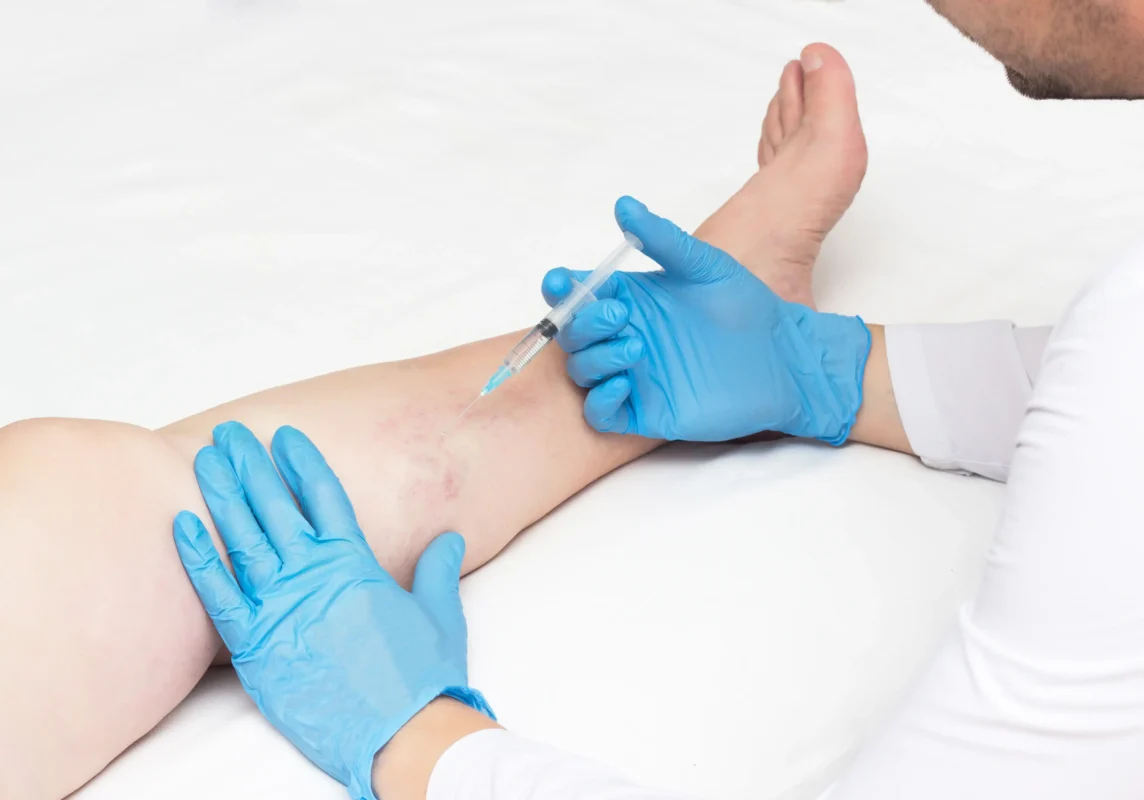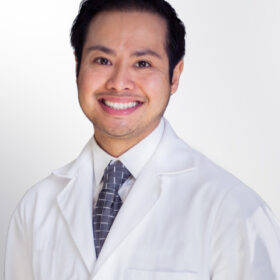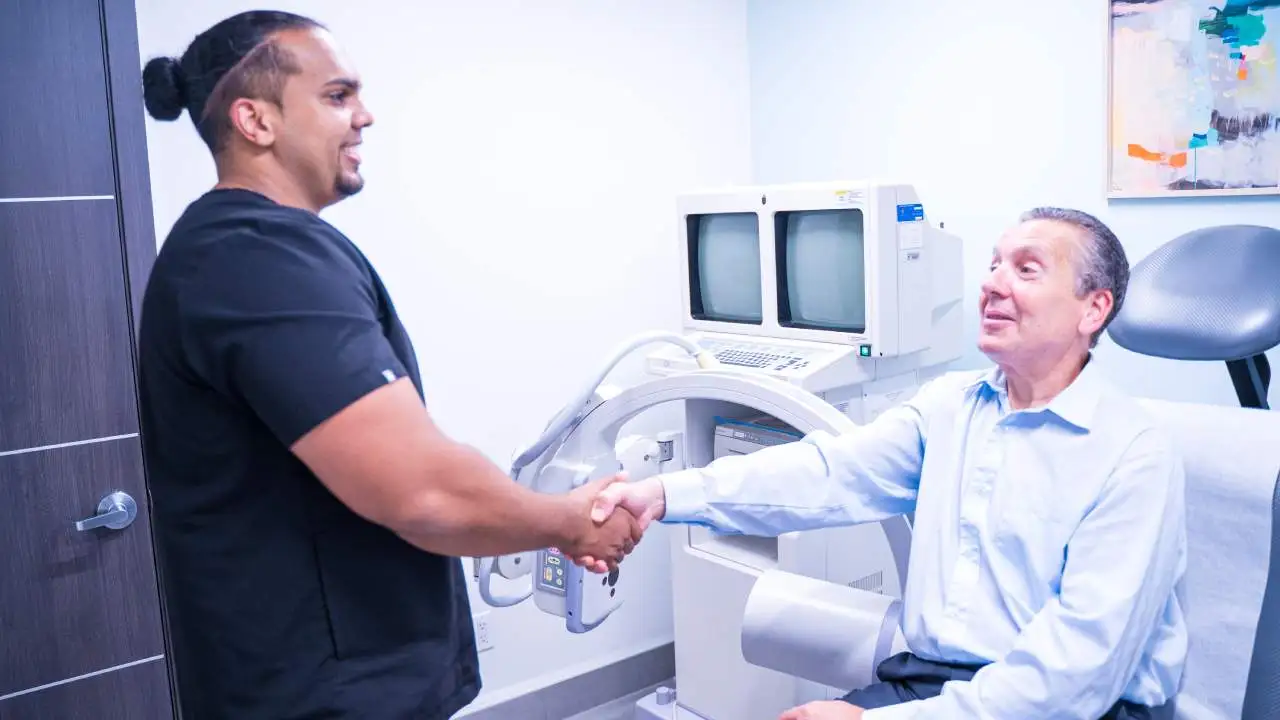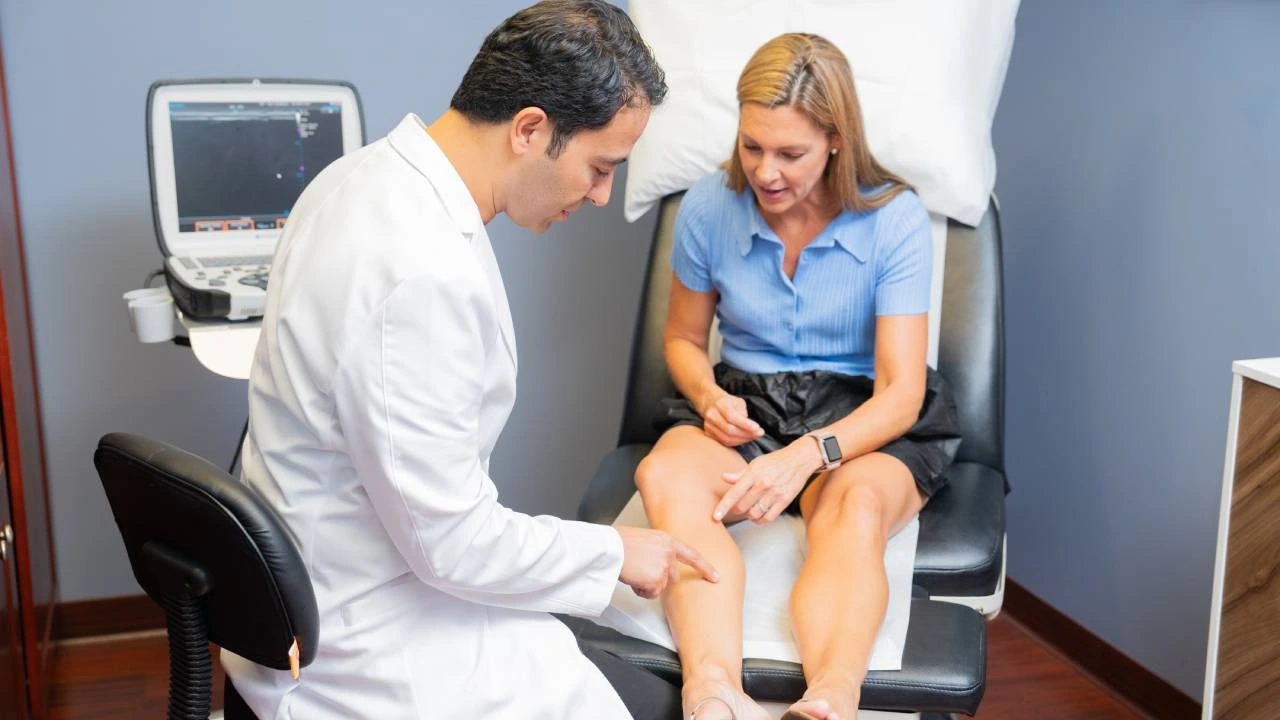Venous insufficiency is a condition where the veins in your limbs are not able to send blood back to the heart, leading to blood pooling in the legs. In healthy veins, valves keep blood flowing in the right direction. If you have venous insufficiency, these valves do not work properly.
Thankfully, it is possible to treat this venous insufficiency and an expert vein doctor can help you find out how. Taking medication and making lifestyle changes to promote blood flow can help to ease the symptoms. However over time, many people may require procedures to cure venous insufficiency.
If you already know you have Chronic Venous Insufficiency and want to go ahead and find the best vein doctor near you that takes your insurance coverage, scroll to the end of this article to our vein treatment cost calculator so our team can help you verify your insurance and book an appointment at your earliest convenience. Vein Treatments are covered by all major medical insurances and Medicare.

What are the Symptoms of Venous Insufficiency?
Venous insufficiency causes several annoying symptoms, including swelling in the legs and ankles, a tight feeling in the calves, itchy legs, pain when walking, and restless legs. You might also notice your skin taking on a brown shade near the ankles. You could even have painful leg cramps and muscle spasms. Some people with chronic venous insufficiency develop leg ulcers that are hard to treat.
One of the most obvious signs of venous insufficiency is varicose veins. These unsightly veins bulge out of the leg, creating visible lumps that in some cases can be painful or itchy. If you have these symptoms, you’ll wonder -can venous insufficiency be cured?
What are the best treatment options?
There are several procedures that can treat varicose veins. These include radio frequency ablation, laser treatment, sclerotherapy, and VenaSeal. Can Venous Insufficiency be cured?

Radio Frequency Ablation
Radio frequency ablation (RFA) is a minimally invasive treatment for venous insufficiency. During an RFA treatment, a vein doctor inserts a fiber into the affected vein through a very small opening in the skin. This fiber releases radio energy into the vein. This energy heats the vein, which triggers a thermal reaction in the vein wall that makes the vessel immediately close up.
Vein doctors use a local anesthetic to numb the vein before using radio energy to treat the insufficiency. As a result, the RFA procedure is not painful. After the procedure, many people experience no or only very mild discomfort.
RFA is an effective treatment for varicose veins. The procedure causes the damaged vein to close up, which means that blood cannot pool inside it. Blood flows back to the heart through the remaining healthy blood vessels.
Laser Treatment
Laser ablation is another minimally invasive treatment option for chronic venous insufficiency. Like RFA, it involves placing a fiber into the affected vein. The difference is that this treatment uses laser energy, instead of radiofrequency energy, to trigger closure of the vein. Laser treatment is performed under local anesthetic and you can go home right after the procedure, which takes between 30 and 45 minutes.
For best results, take a walk right after your laser treatment to promote blood flow. Your vein doctor will wrap the leg in a bandage and recommend you wear medias de compresión. to help the treatment take effect. You might have some skin bruising, but usually discomfort after the procedure is minimal. Laser treatment has a 97 percent success rate when it is performed by a skilled vein doctor.
Escleroterapia
Escleroterapia is a treatment for varicose and spider veins. This treatment involves injecting a small amount of a salt solution into the vein to damage its lining. The damage causes a blood clot in the vein, which gradually turns into scar tissue that causes the vein to close up. Once the vein is closed, no more blood can flow into it, which means the vein becomes less visible through the skin.
Sclerotherapy takes between just 10 and 30 minutes, although you will need to wear medical grade compression stockings for several days or weeks to apply pressure on the vein and increase the effectiveness of the procedure. You might need more than one sclerotherapy session to successfully treat your vein disease. The best way to know whether you would benefit from sclerotherapy for varicose veins is to see a varicose vein doctor.
VenaSeal
VenaSeal is a type of “vein glue” that was approved by the FDA in 2015. Clinical trials have shown that this medical adhesive is both effective and safe as a spider vein treatment. When a vein doctor inserts the glue into the vein, it works within seconds t9o seal the vein walls. Within a few hours, the adhesive hardens and permanently closes the vein. Eventually, the body absorbs the glue. Meanwhile, the body re-routes blood through healthy veins.
A German study showed that VenaSeal had a success rate of almost 99 percent. Six months after this varicose vein treatment, 98.9 percent of veins remained closed. VenaSeal has the advantage of not using heat or laser energy to close the vein, which means it is less likely to be painful. You also don’t need to wear compression stockings after this procedure to ensure its success.
All these non-invasive treatment options have high success rates in treating varicose veins and chronic venous insufficiency. An alternative varicose vein treatment is surgery, but few vein doctors recommend surgical treatment these days because it is a more invasive and risky option. Non-invasive alternatives to surgery allow you to get back on your feet immediately after varicose vein treatment.
It is very important to have your varicose veins evaluated by a vein doctor before you decide on a treatment option. In some cases, varicose vein are a sign of an underlying problem that requires evaluation and treatment by a vein expert. Schedule an appointment at the Vein Treatment Center to discuss the options for treating your vein disease. Vein Treatment Center accepts all major medical insurances, including Medicare.








